For general physical preparedness (GPP) in boxing, you should choose exercises from other sports. These exercises should match the boxer’s movements and help in the development of physical skills. Some types of exercises can in general have a positive effect on the boxer.
But they can at the same time hurt the development of boxers’ necessary skills. For example, fencing from the movement’s speed side is classified as a complex motor reaction. But a tense back, turned feet, bent knees, and restricted movement directions can be damaging to a boxer’s coordination or agility development.
Or, for example, bench presses or shoulder presses with large weights. They can develop upper limb strength and at the same time limit punching speed. It is important to choose exercises that will help improve the body’s functionality in the right way.
Also, at the same time to develop the boxer’s required skills and technique. Each exercise has the main purpose ( for example, speed development), but at the same time helps to improve other skills as well.
Speed walking
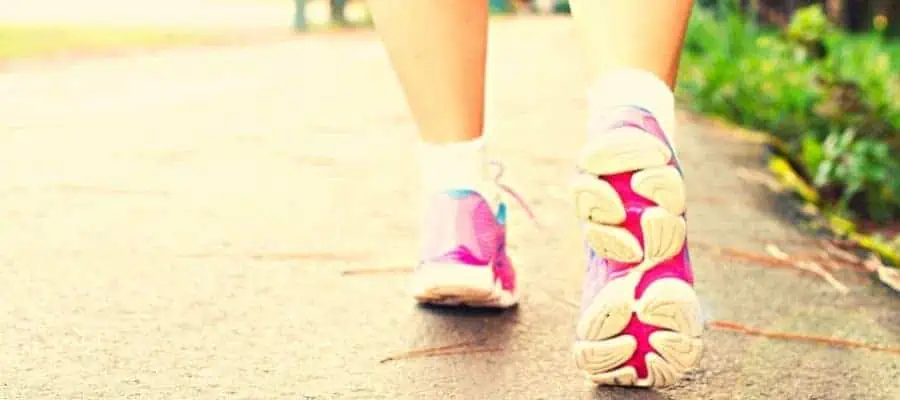
Long and fast walking involves most of the body’s muscles. This exercise improves cardiovascular, breathing, and other body systems. Also, it develops metabolism, strengthens internal organs, and improves their functionality. Walking has a positive effect on the development of endurance and develops a strong-willed personality.
Running

The most common exercise and the basis of many kinds of sports. Running requires higher levels of body function than walking. This is because the intensity of the muscle work is much higher while running. As a result, the activity of the cardiovascular, breathing, and other body systems is improved.
Also, this increases significantly the body’s metabolism. By mixing the length of the distance and the speed of the run, it is possible to distribute the load on the body. This is necessary to develop endurance, speed, and other abilities that a boxer needs.
Long and slow running, especially in the woods or park, has a great cleansing and psychological effect. Fast running has a positive effect on endurance and speed development. Running also develops willpower and the ability to balance your energy.
Running And Walking Mixed
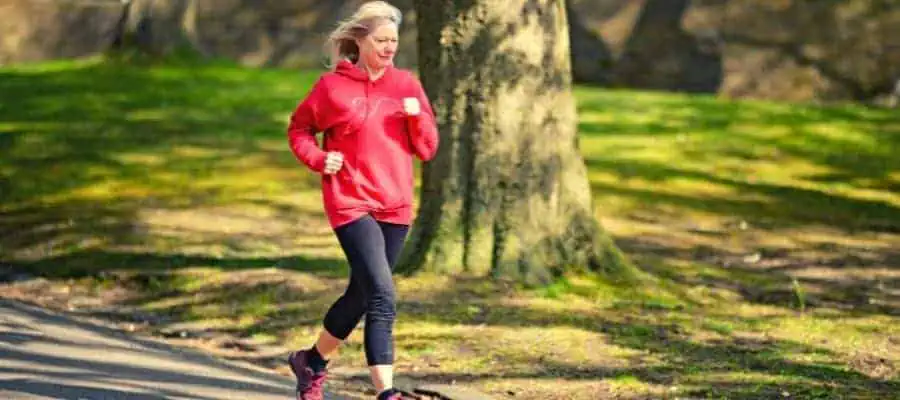
This exercise is a mix of running and walking for 3-10 km. The intensity depends on age, physical condition, and set workout time. This type of exercise compared to running has a higher load volume, but less intensity. Boxers often use it on GGP training days.
The tempo of running can be of medium speed or mixed with a sprint of 60, 100, and 200 m, followed again by jogging and then walking.
Obstacle Racing

In the 500-1000 m running a boxer runs through obstacles to improve agility, strength, speed, and balance. It also improves the ability for short-time muscle tension of most muscle groups and the development of general endurance.
As obstacles you can use barriers (jump over), a fence (climb over), or a log (run over). If running in a nature area, such as a forest, you can use ditches, stumps, or logs as obstacles to jump over them.
Outdoor Sports
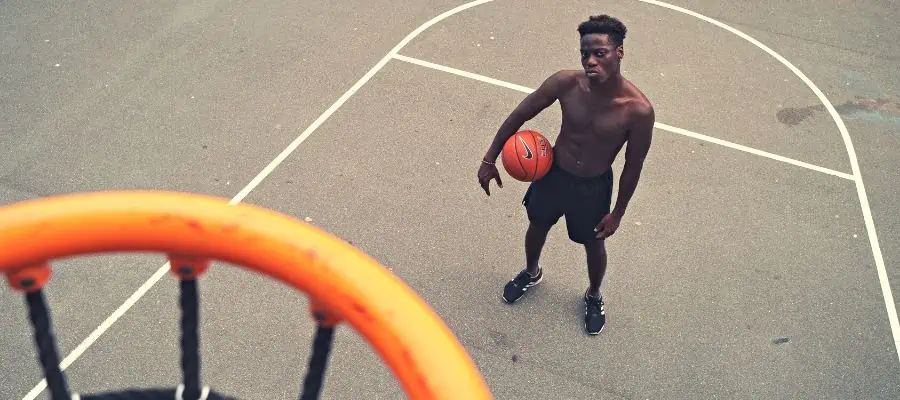
Outdoor sports are an important part of the boxer’s training. Especially handball, basketball, tennis, hockey, relay races for speed and agility are similar to boxing in many ways like fast movements, turns, active counter-resistance of the opponent. They also develop speed, agility, and endurance.
A variety of natural movements, in most cases in the open air, helps to improve the nervous system and locomotor system. Also to improve metabolism, increase the activity of all organs and body systems. Outdoor sports are also a good way for active recreation.
Depending on the intensity, the intake of oxygen by muscle tissues increases dramatically. About eight times more than the rest state. Great transformations also happen in the motor system. Muscles are getting stronger. Their strength and flexibility are improved, and their joints are becoming more agile.
Wrestling

This type of sport is usually based on short-term maximal muscular tension, breath-holding, and sometimes also long-term muscle tension. The importance of wrestling exercises increase the speed of movement as well as the strength of the shoulder girdle muscles.
The joints will strengthen, and the body’s movements will be more elastic. Wrestling brings up positive psychological benefits for the fighter. Wrestling in a stance is like the moves in boxing in a close-distance fight. Fighters are struggling for a balanced body position, doing dips and dodges.
This type of exercise is used at the beginning of a lesson (during the warm-up) or the end, depending on the focus of the training.
Rowing

Rowing is usually used as the beginning of active recreation. It is good for developing muscular strength and flexibility of the upper and lower body. It does not have the same movements as boxing, so you should not get too enthusiastic about this exercise.
Gymnastics Workout With/Without Equipment And Acrobatic
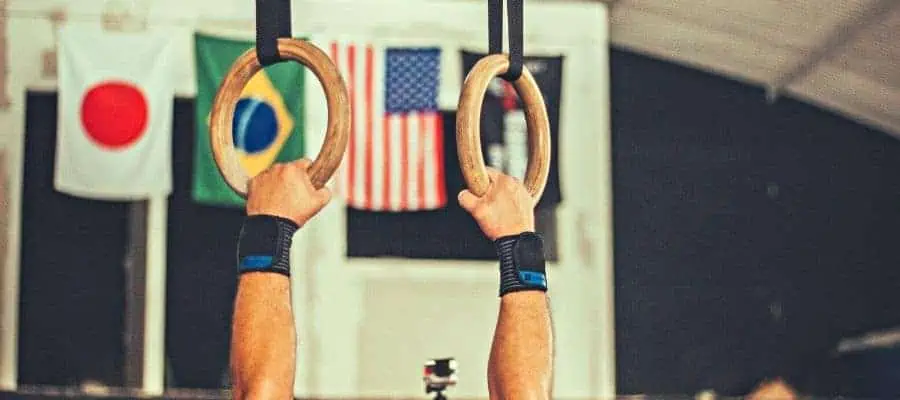
Exercises focused mostly on improving the motor skills of athletes. Also, as the development of strength, balance, and the control of muscle tension. Muscle tension control includes exercises with gymnastic equipment, acrobatic freestyle exercises, and jumps.
Exercises to develop coordination, flexibility, strength, speed, and courage are necessary for boxers in all training sessions. Gymnastic exercises, for example, are used in the warm-up, as well as in the second half of training. It develops the strength or flexibility of specific muscle groups of the body.
Pulldown Machine And Resistance Band
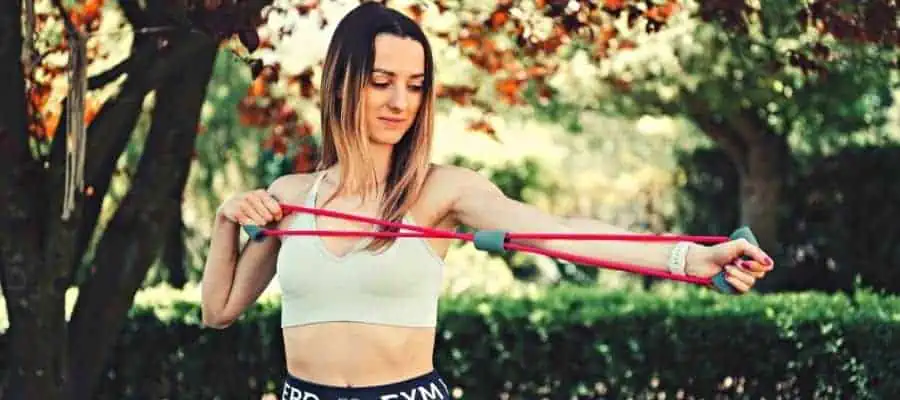
A resistance band is a typical piece of equipment for the development of muscle strength. Exercises with the help of a resistance band are very popular in many sports. They are extremely good for developing muscle strength and building muscle mass.
But do not get enthusiastic because they lock the muscles and the movements start to be slower. Therefore, after the set of exercises with the resistance band, you should do speed exercises without additional weights or tension (rope jumping, shadow boxing to relax the muscles, etc.).
Fencing
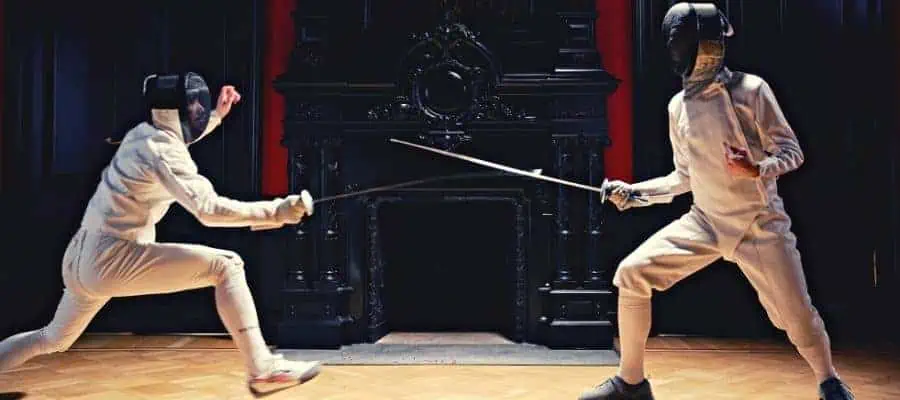
Fencing helps to develop the boxer’s speed, timing, distance feel, accuracy, and high body coordination. It can also be used for the general physical preparedness (GPP) of a boxer. But don’t forget that your main sport is boxing and don’t invest too much time in fencing.
Cycling

Bike riding develops the muscles and joints of the lower body. It also has a positive effect on the cardiovascular and respiratory systems and increases the body’s metabolism. Cycling on rough terrain helps also to improve physical endurance.
Swimming
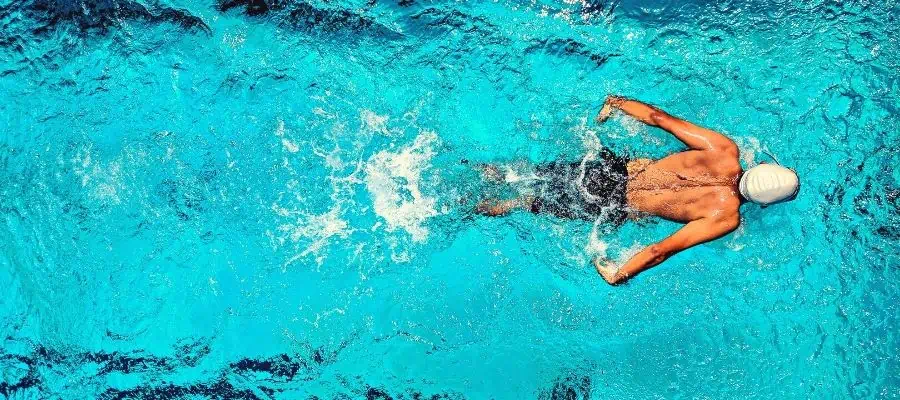
Swimming in different styles is extremely important for boxers. The smooth movements and rhythmic breathing develop the ability to properly relax and tense muscles. Also, it develops the thorax area and the body’s freedom of movement.
In addition, swimming has great hygiene and health benefits and also has a calming effect on the nervous system. It is useful to practice swimming after specialized training or GPP training as a way to restore the body after heavy loads in all training phases.
Jumping

Jumping into the water from a low height, with a parachute, and jumping from a springboard develop courage, determination, and body coordination. These exercises are recommended in the period after competition time. These exercises are also an excellent form of active recreation.
Weights Exercises

Exercises with weights play an important role in the boxer’s strength training. These can be barbells, dumbbells, and other equipment. Practice and scientific research have proven that all kinds of exercises with small weights are very effective.
Also exercises with small weights for individual muscle groups are an effective way to increase strength and speed. These exercises should be mixed with speed exercises without weights. For example, slopes, squats, or body twists are executed first without weights, then with weights, and again without weights.
The weight exercises make up one-third of the exercises without weights. So, if you doing about 6 exercises in total, then you need to execute only 2 exercises with weights. Exercises with weights are used in all boxer training phases. It is important to note an exercise that helps to develop the power and speed endurance of boxers.
These are exercises with small dumbbells between 1 and 4lbs. Using dumbbells the fighter does shadow boxing. Also exercises for defense and many exercises for strengthening the shoulder muscles. After 2-3 minutes of exercises with dumbbells, you should do the same exercises without dumbbells for 3-5 minutes.
This variation can be repeated two or three times.
Exercises With Indian Clubs And Gymnastic Sticks

Exercises with Indian clubs and a gymnastic stick can be classified as a group of exercises with weights. They may be like swinging or punching exercises. A heavy stick is hitting an object that somewhat buffers the punch (e.g., a car tire).
Punches are made from the side, top, and bottom, holding the stick in one or both hands. The exercise develops muscle strength and speed that are used in striking movements.
Medicine Ball Throwing

Throwing the med ball is an important part of a boxer’s training. The ball is thrown from different positions with one and two hands. For example in standing, sitting, or lying positions. The most effective exercises are throwing the ball in motion backward, forwards, sideways, and in a circle.
These exercises develop speed and strength qualities including speed endurance. Also, improve orientation, and the ability to quickly tense and relax the muscles.
Tennis Ball Exercises

Exercises with tennis balls are developing speed, accuracy, and coordination. They can be executed with a partner and alone (throwing and catching). They are also useful in all types of training, most often these exercises are executed at the end of the training.
Exercise With Partner

Exercises with a partner in resistance (like wrestling or clinching), in pushes (push each other to the shoulder area, etc.). All this you can do from a standing, sitting, and lying position. This workout art helps to develop strength endurance and balance.
Athletics Exercises
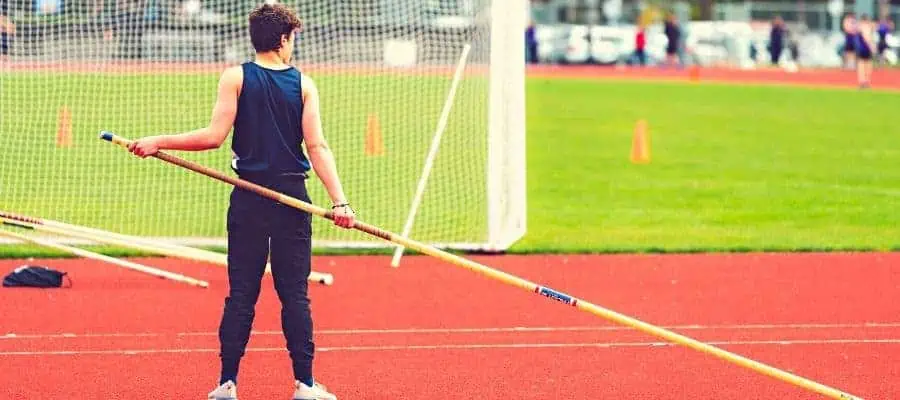
Exercises from athletics are used to develop the speed, strength, and quickness of specific body muscles. These exercises are such as shot put, long jump, high jump, etc. These exercises are popular in boxing and are part of the general physical preparedness system.
Physical training exercises are necessary for the entire training process of a boxer. They take up at least half of all training time. While selecting exercises it should be taken into consideration that the highest results in one type of physical training can be reached only in the case of balanced development of other physical training types.
This means that it is necessary to build up such a combination of exercises that would train all the body muscles in a well-balanced way.
Jump Rope
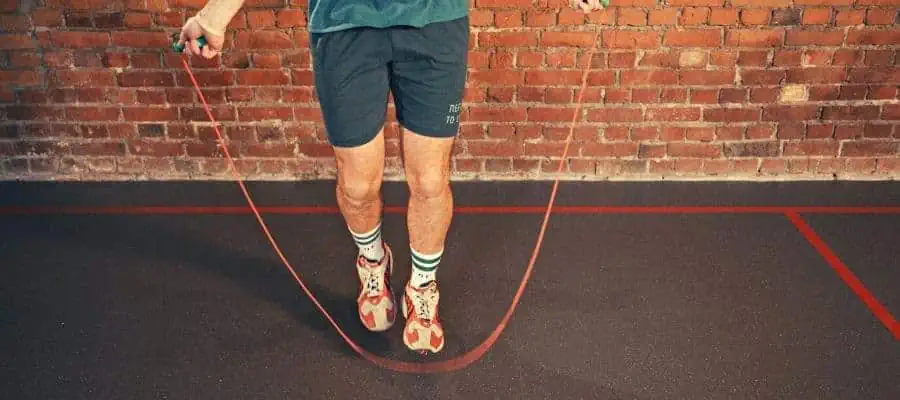
Jumping rope helps to strengthen leg muscles, develop coordination, and boxer’s easy movements. In each training session, especially a specific one (e.g. technique training), it is necessary to perform exercises with a rope for at least 5-15 minutes.
It is very important to jump in different ways. On two legs, alternating left, and right legs, etc.
Punching Bag
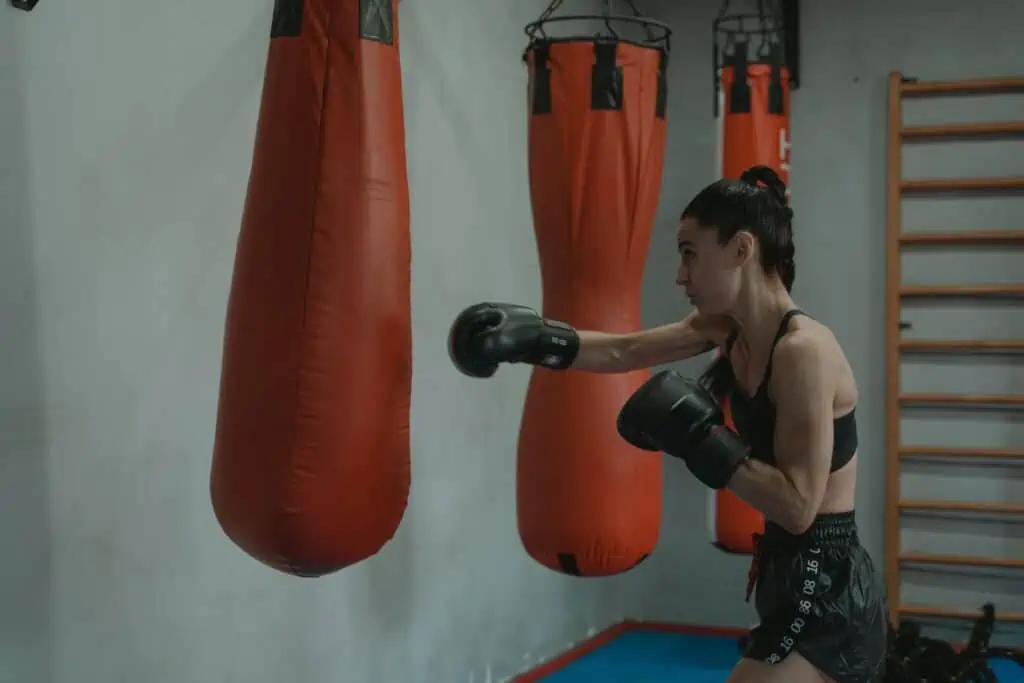
Punching bag exercises develop the right fist holding. Also the ability to effectively use muscle strength in punches at different distances. It helps to spread the force of the punch correctly, especially if multiple punches are thrown quickly. A heavy bag is a good tool also for punching power and speeds endurance development.
The wish to hit the bag with as many strong punches as possible helps to develop special body endurance. For the workout, it can be used different types of punching bags. Most gyms have a universal bag or a couple of bags types their boxers need.
Punching bags are movable. Boxers develop their punching skills by moving forward and backward and developing a good distance feeling. Usually, the exercises start with single punches. After that two different punches and finally combinations with some accent punches.
On a bag that moves in a circle, the boxer perfects his punches by moving forward and in a circle. All kinds of punches, such as straight punches or hooks, can be executed here. In addition, the boxer performs all these punches at different distances (short, medium, and long).
Punching Ball

Exercises with a punching ball (filled with sand or water). By the nature of the exercises, sand punching balls are similar to punching bags. They can be used to throw more powerful single, double, and combination of punches. A punching ball filled with water perfectly dampens the punch and it is quite heavy and mobile.
The different weights and hardness of these punching balls will give the boxer the possibility to vary his punches. Also to find the right distance and to develop the accuracy of the punch. On one punching ball, it is possible to throw a powerful punch in a combination.
Then on the other one (with sand) execute punches more accurately but not so hard. Usually, these kinds of punching balls are hung near each other. The boxer in the whole round improves his punches by moving from one ball to the other.
This way the boxer reaches mastery of the punching speed and accuracy in distance choosing.
Wall Fixed Bag
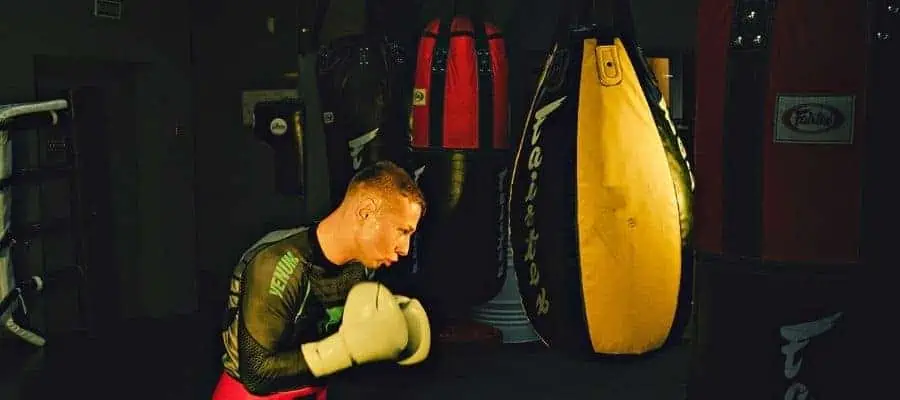
Exercises with a wall-fixed bag are used in training most often by a beginner group of boxers. This equipment is used for almost all kinds of punches. The fixed position of the bag makes it easier to measure the length of punches. The wall bag is used to deliver punches from the one stand position and with a step forward.
Speedball
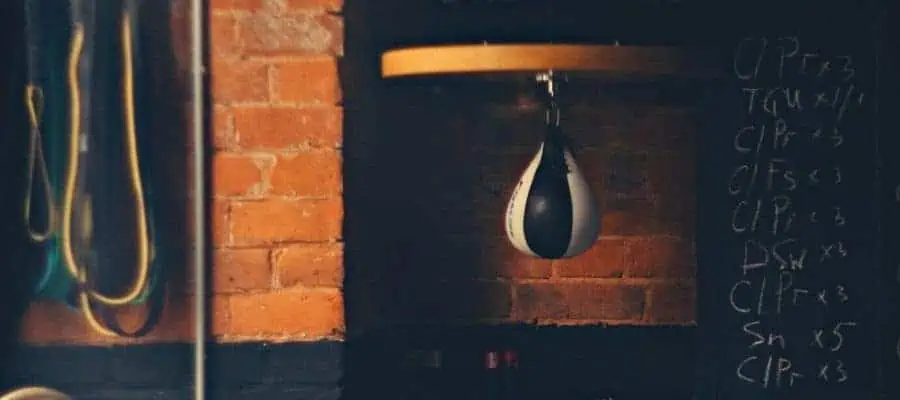
Speedballs can be standard size or a little bit smaller. The smaller ones bounce faster after the punch. A ball punching tempo requires the boxer to keep a fixed tempo, to punch with a specific force and speed. The harder the punch, the faster the punching bag moves.
Exercises with speedball boxers develop the ability to throw punches accurately and quickly one after another. Also, it develops a good focus and movements rhythm. Long rhythmic speedball punches are a good way to develop the speed endurance of the upper body limb.
Also to develop the ability to relax the muscles at the moment of swinging for the next punch. Learning to punch the speedball begins with moving the body weight from foot to foot and moving the hand forward to punch and take it back. This depends on the accuracy of hitting the ball with your fist.
First, you must learn how to hit the punching bag with the 1,2,3 rhythm (the punching bag is hit three times). It is recommended to hit the speedball before it reaches the middle of the hanging board. Boxers need to master the exercises in different tempos.
After boxer can also work on punching the ball randomly. He needs to alternate the punches in different rotations and change the movement tempo.
Double-End Ball
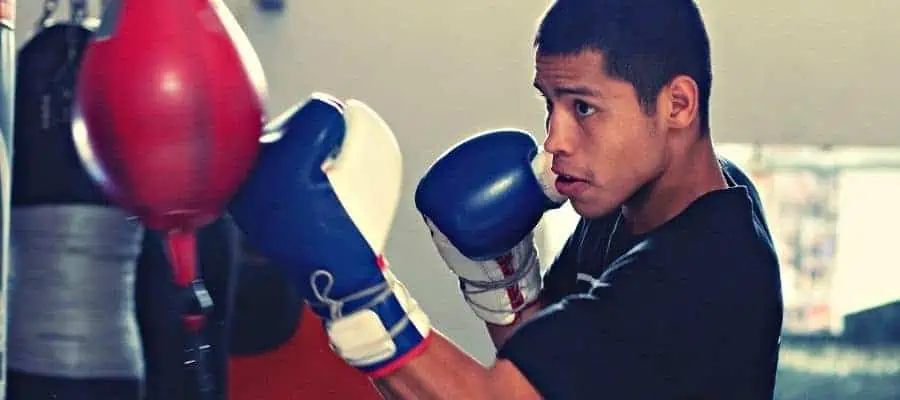
Rubber bands are mounted to the ball, where one of them is fixed to the top of the bracket with its free end and the other one – at the same distance – to the floor. Hitting the ball makes it move backward and forwards. Straight punches are delivered from a fighting stance.
Quick ball movements require the boxer to keep the tempo, and to punch with a certain force and speed. Punching the ball should be executed almost as if it is chasing the ball when it moves away. This exercise helps to develop a distance feeling, accuracy, punching speed, and coordination of movements.
The ball can also be used to develop the speed of dodges (e.g., after hitting the ball hard, do a dodge and then hit the ball again). It is also possible to make a single left or right hook. The same ball can be fixed in a horizontal position. It is used to improve left and right uppercuts and straight punches like jab and cross.
Punch Pads

Punch pads are used to improve punches and develop quick reactions, accuracy, and focus. These pads are used at all levels of boxer training. Coach, holding the pads, sets them up for punches at different distances. At the long-range – for straight punches, at medium and short-range – for hooks and uppercuts.
It is important to keep the right punches’ execution. Also, the body weight shifts from leg to leg, moving the center of gravity and the punch accuracy. In advance, set pads allow you to improve the execution of some straight punches in a certain combination with the side punches.
Combinations are improved to the point of automaticity with an accent on a specific punch. Holding his pads and moving around the ring, the coach changes the distance. It makes the boxer move forward or backward, sideways, and in a circle. In this way, the boxer improves his distance feeling by punching execution.
To develop the reaction time of the boxer the coach suddenly changes the position of the pads. For example, he puts out a pad for a straight or side punch or the uppercut. In the same way, in the exercises with a punching pad, it is possible to imitate some specific fight situation. It can help to improve some attacks or counterattacks.
These were my 27 GPP exercises. I hope this article was useful for you. Good luck in boxing.
Recent Posts
What is Manachai's Fighting Style? Unveiling Muay Thai Mastery
Manachai, a celebrated figure in the Muay Thai world, has captivated audiences with his exemplary martial prowess. Hailing from the heartlands of Thailand, his name is synonymous with the art of...
What Was Chamuekpet Hapalang's Fighting Style? Unveiling Techniques
Chamuekpet Hapalang was a renowned figure in the world of Muay Thai (record 200-48-2), embodying a fusion of Muay Bouk and Muay Khao styles. Originating from Thailand, the art of Muay Thai is known...
